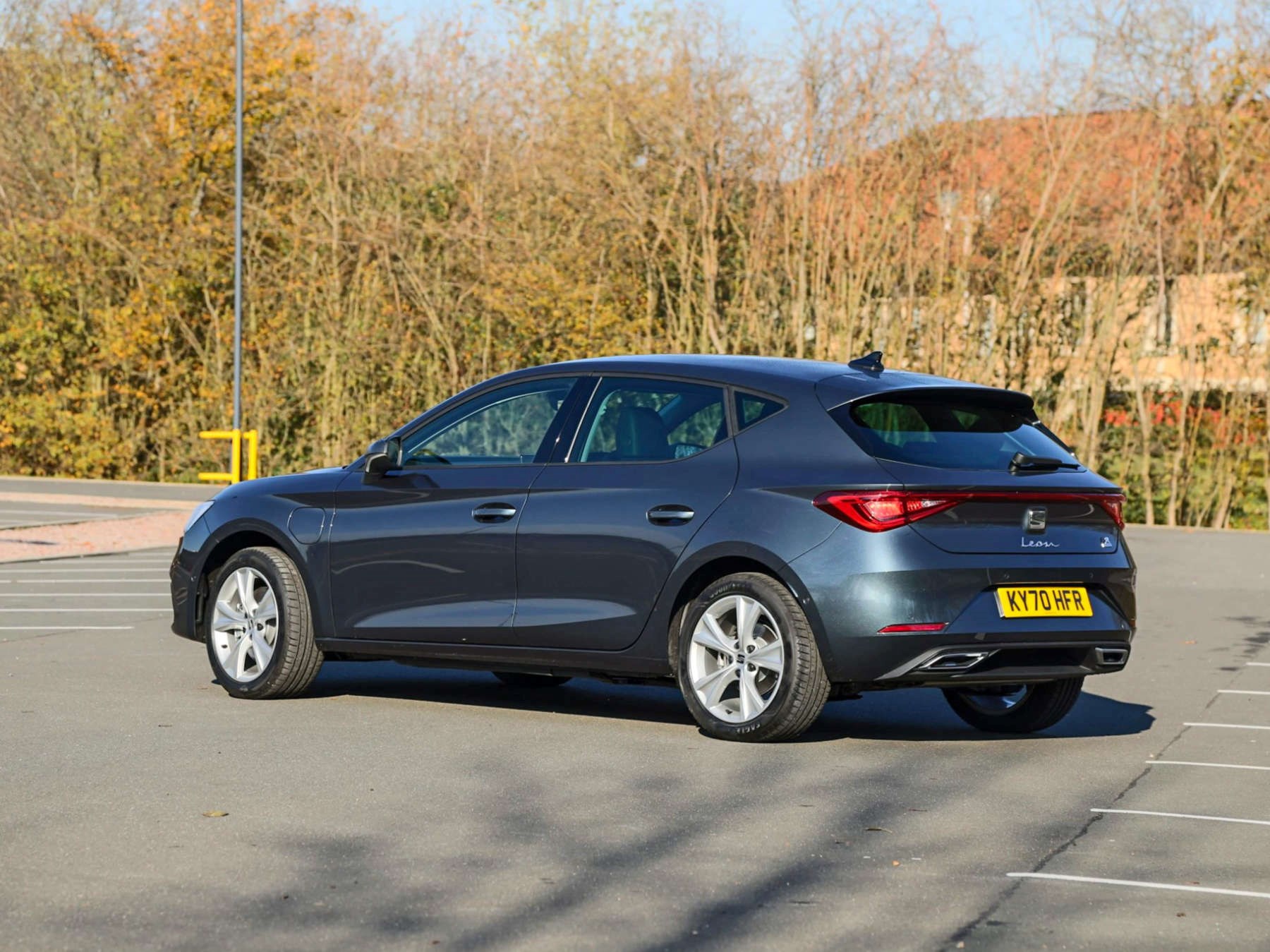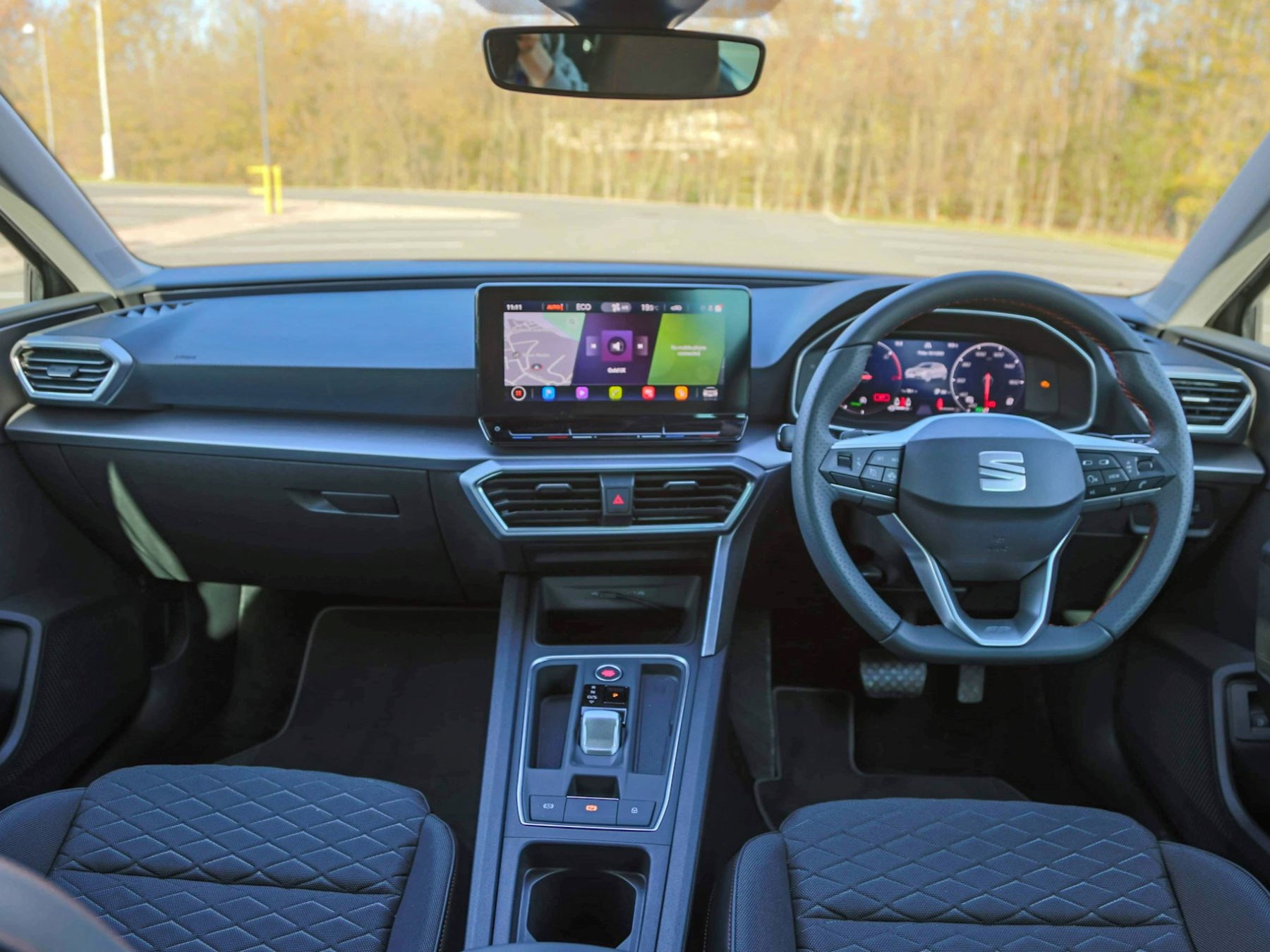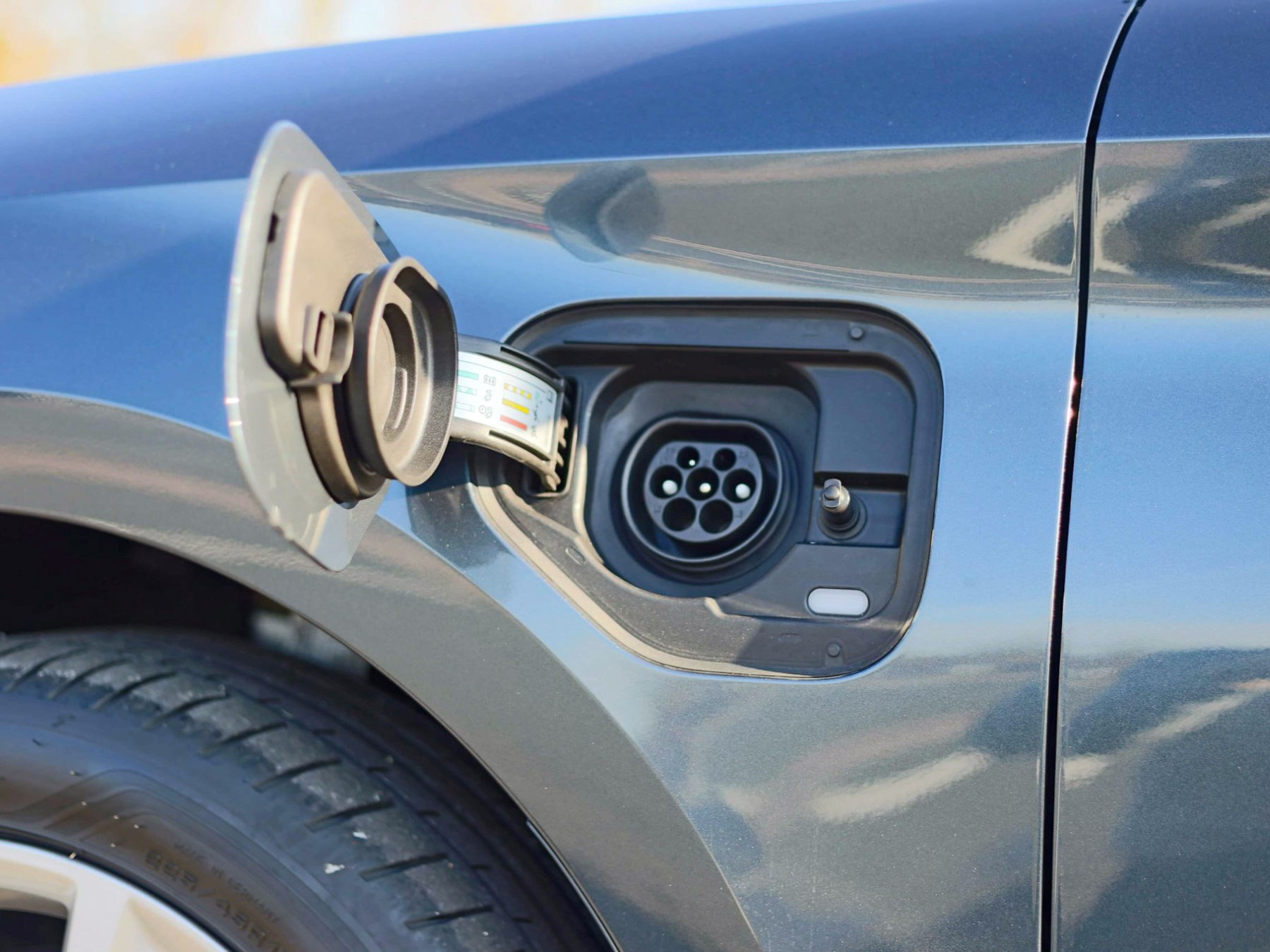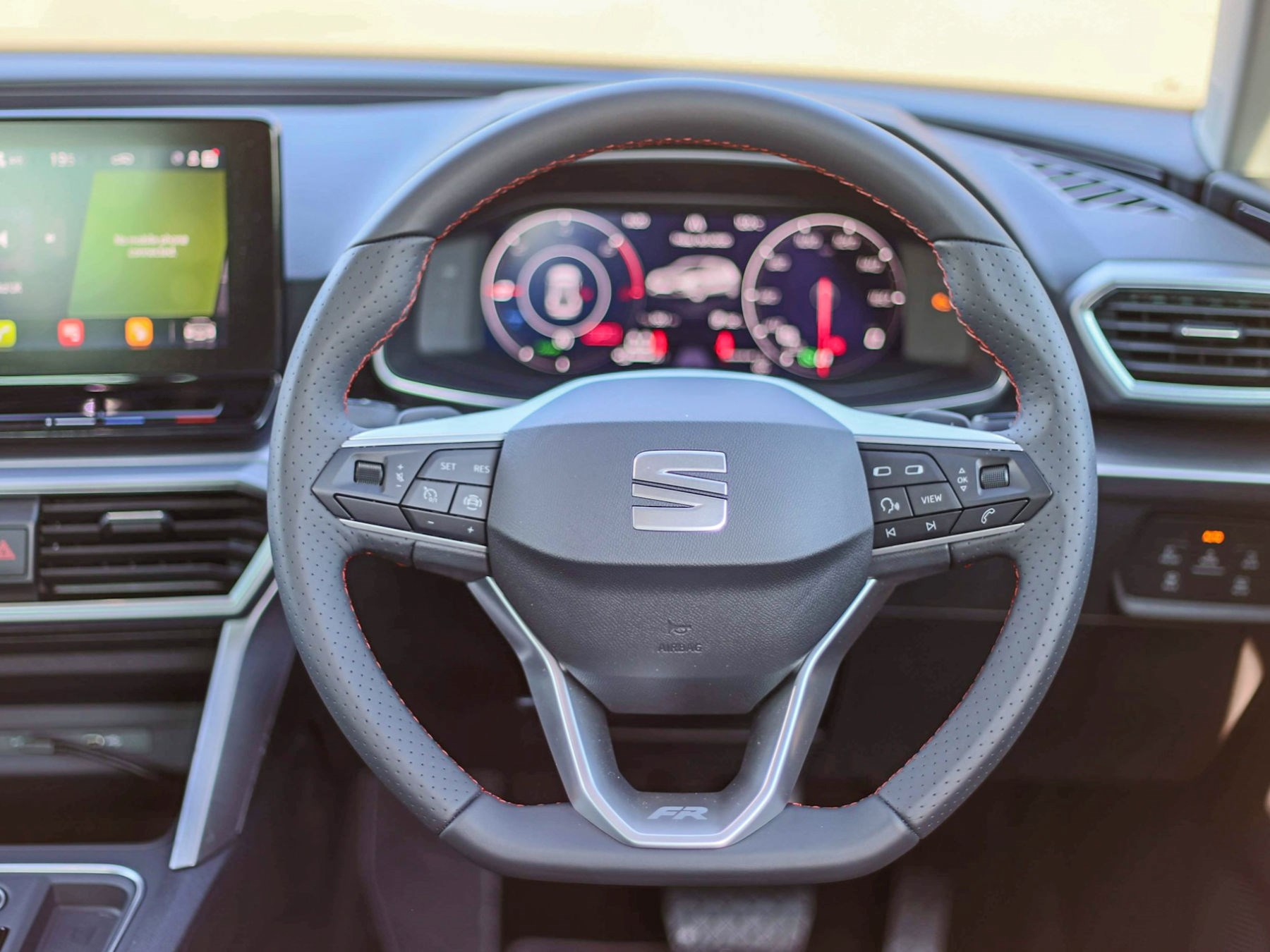► New for 2020
► 1.4-litre petrol meets 85kW electric motor
► Surprisingly perky, bland interior
As a CAR reader, you’ll be well aware of the Volkswagen family hatch hierarchy. The A3 is poshest, the Golf is just below, while the Octavia is the most practical and the Leon is supposed to be the one.
And now Seat’s bestseller is available as a plug-in hybrid capable of up to 40 miles of electric-only range on the WLTP cycle. Seat’s bumf mentions low-emission urban zone driving, but we reckon there’s just a bit of the warm hatch about the Leon PHEV.
Let’s talk about those looks
It’s a definite tick in the revolutionary box rather than evolutionary one. At the front it looks Tarraco-esque while the rear is sleek. Those full-width LED rear lights look brilliant, while the Leon badge on the back apes a handwritten style that looks classy or maybe a bit too live, love, laugh depending on your view of the influencer Mrs Hinch.

The Leon is a good looking car, then. Admittedly, the pics here are of the most basic FR, with the smallest wheels (17-inch) and a Magnetic Grey exterior. If you like the colour grey you’ll get on with the interior.
Grey you say?
Not half. It is very dull here. And yes, we’d even go as far as saying dark. Certainly not exciting.
Behind the square-ish steering wheel lies Seat’s new 10.25-inch digital driver binnacle. This style of instrumentation has almost become de rigueur in the car world, and the Leon’s is simple to use and displays a seemingly endless amount of information.
The 10-inch infotainment screen will have many frothing at the mouth due to its lack of physical buttons. This minimalist approach looks brilliant when you’re not using it, but we reckon most people would prefer a few buttons.
To get to the full heating controls, you’ll have to locate them from the menu. There are at least red and blue touchpad-style buttons on offer to turn the heating warmer or colder.

SEAT reckons its updated voice recognition software responds more naturally now – so tell it you’re cold and it’ll raise the temperature. This works fine. But it’s still not completely idiot proof. Tell the car to play Radio 4 and it won’t have a clue what to do. It needs to be told to play BBC Radio 4.
Other annoyances: boot size is 270 litres, some 110 litres less than non-plug-in hybrid Leon. The FR spec car on test here retails at more than £30,000 and doesn’t come with a reversing camera, which seems stingy.
Plug-in power
Combined there’s 201 bhp and 258 lb ft on offer. It’ll hilariously spin its wheels in first when the engine and electric power combine, while 0-62mph is dealt with in a respectable 7.5 seconds. Official fuel economy ranges between 217.3 and 235.4mpg, but as with any plug-in this is a pipe dream.
40 miles on a charge is the headline figure here, and judging by our own testing we reckon it’s someway achievable depending on your driving style and route. If you regularly avoid motorways 36-37 miles should be easily achieved.
There are only two driving modes with the Leon PHEV – e-mode and hybrid.

The car can switch between these systems by itself, but it defaults to e-mode on startup. As you’d expect from the names, e-mode tries not to use the petrol engine, while hybrid mixes both.
One easy way to switch the engine on is to mash the throttle beyond the golf ball feel stage. Interestingly, the battery will never completely empty itself, so there will always be just a little bit of charge in it. Drivers can also choose to maintain the battery’s state of charge manually, saving it for built up areas.
It takes 3 hours and 42 minutes to recharge the battery using a fast charger, or around 6 hours at ones plumbed into houses.
On an hour and a half drive we achieved 73mpg with a full battery at the start – not bad for the mixed route of motorways, a-roads and b-roads.
Really, a warm hatch?
We reckon so. A subtle one mind you with extreme levels of bandwidth. Sit in the driver’s seat and the engine start stop button throbs at you. The square small steering wheel feels right in your palm, while the steering itself never feels too light or overly assisted.
The 0-62mph time is merely ok, but it’s the 50-70mph shove that impresses the most. You can really feel the electric power kick you in the back as you climb out of a sweeping corner.

There’s no manual on offer – only a six-speed DSG. It’s a shift by wire, meaning the gear selector is not connected to the gearbox. At least when you pull down the Porsche-style gear selector S mode engages, allowing you to keep in gear without interference. Paddle shifters ensure your hands can be kept on the wheel at all times.
PHEV Leons get multi-link rear suspension and Dynamic Chassis Control. These systems ensure the Leon handles the additional weight of the batteries. At 1,614kg, the PHEV is some 346kg heavier than the lightest Leon. The Dynamic Chassis Control means the Leon analyses the road condition and driver inputs (like the steering angle) to adapt the suspension. It doesn’t handle like an Alpine A110, but it’s very neat and composed. We imagine the 17-inch wheels go some way in explaining the stellar body control.
Braking is solid and reliable. Unlike with other hybrid systems where you never fully know how much regen is happening, the brake pedal gives consistent feedback, giving drivers great confidence in just how hard to press the pedal.
Verdict
It’s not a traditional warm hatch like a Suzuki Swift Sport or Peugeot 205 Rallye. It’s really under the radar, completely placid when zipping around on pure-electric, but with a bit of bite to it when you control power with the paddles and exercise both energy sources.
In terms of driver enjoyment the relatively heavy and automatic Leon leaves a bit to be desired in comparison with other warm hatches, but as a family-hauler capable of 40 miles of pure electric driving, it offers a brilliant turn of pace that will leave a few people surprised and delighted.